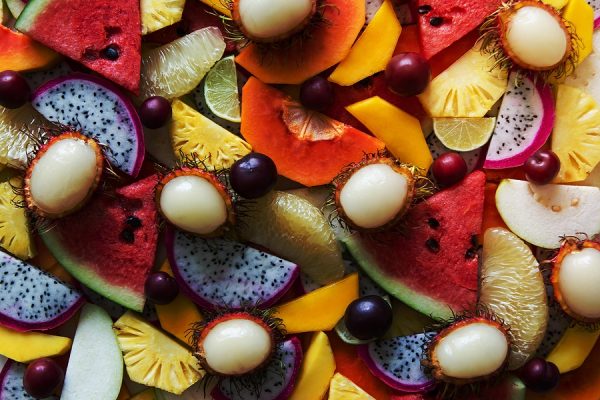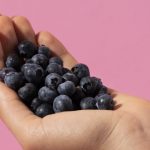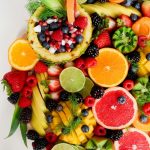Fresh organic blueberries are, by far, one of my favorite snacks.
And it’s interesting because, as small as these berries are, you wouldn’t think they would pack much of a punch. But I’m getting a plethora of health benefits every time I pop one in my mouth.
Blueberries are jam-packed with a potent class of antioxidants called anthocyanins. One thing anthocyanins are great for is improving insulin sensitivity. They work by protecting the pancreatic beta cells that produce insulin. They also enhance insulin sensitivity in muscle, fat, liver cells and other vital organs.
This means that eating blueberries can help the body absorb and process blood sugar better. Blueberries can even help reduce blood sugar spikes when you eat them with high glycemic carbohydrates like white bread.
The anthocyanins in blueberries are also known to protect against cardiovascular disease, have anti-cancer effects, suppress weight gain, help with visual health and improve cognition.
That’s a lot of power for such a tiny little fruit!
The thing is, while blueberries may be the most plentiful source of anthocyanins, you will find them in any fruit (or vegetable) that has a blue, black or purple hue. This includes blackberries, plums, prunes, elderberries, purple grapes and currants.
But anthocyanins aren’t the only super power you’ll find in fruits.
The Super Powers of Fruits
Only 12% of U.S. adults eat the recommended 1.5 cups of fruit daily. So only about one out of every 10 adults are getting enough fruit in their diet.
Plus, the top choices of fresh fruit are pretty mundane. According to the Economic Research Service of the USDA, bananas are in the top spot; followed by apples, tomatoes, watermelon, grapes, oranges, strawberries and pineapple.
Where is the adventure in that? Especially when there is a whole rainbow of fruit colors available to you, all with their own health benefits!
For example, red, and red-tinted fruits such as tomatoes, cranberries, pink grapefruit, pink guava, apricots, watermelon and pink grapefruit are important sources of a particular carotenoid known as lycopene. You’ll also find lycopene in some of the orange fruits, such as papaya, mango and pumpkin.
This antioxidant is best known for its anti-cancer activities. But it also has a positive effect on endothelial function, blood pressure and inflammation. Plus, lycopene helps keep your eyes healthy by protecting against oxidative stress.
We also have our orange and yellow fruits, which are rich in carotenoids. In addition to the lycopene found in the orange hues, they also contain lutein, zeaxanthin and other carotenoids that are great for your eyesight. Plus the citrus fruits that fall into this category are loaded with vitamin C.
All of these nutrients are part of the widely recognized AREDS 2 formula designed for age-related macular degeneration.
Oranges, pineapple, lemons, starfruit, grapefruit, nectarines and persimmons are examples of some fruits that fall in this color spectrum, along with several of the fruits that have a red-tinted hue (papaya, pumpkin, etc.).
We even have green fruits. Avocado is a perfect example, but there is also kiwi fruit, green apples, gooseberries, honeydew melon, limes and green pears. Green fruits are typically high in potassium, and contain a large range of vitamins and minerals.
But the potassium is important. I recently mentioned how potassium acts as a great sodium equalizer. Basically, it works to counteract much of the damage caused by a high sodium intake. So adding more green fruits to your diet is a great way to ward off cardiovascular problems down the road.
Skip the Juice and Eat the Whole Fruit
Drinking fruit juice is not the same thing as eating the whole fruit.
Whether you make it yourself or buy it at the store, it will be practically devoid of fiber. All of the fibrous parts like the pith, peel and seeds are left behind. And without that fiber, juice is guaranteed to produce a large blood sugar and insulin response.
In other words, drinking fruit juice can be as bad for you as drinking a soda. As a matter of fact, as little as one serving of fruit juice daily can actually increase your chances of becoming diabetic by as much as 21%.
So skip the fruit juice. Pass up the sweets and go straight for the good stuff… a nice, plump, organic piece of fruit. The greater the variety, the more nutrients you will get and the more health benefits you’ll achieve.
SOURCES:
Stull AJ, Cash KC, Johnson WD, Champagne CM, Cefalu WT. Bioactives in blueberries improve insulin sensitivity in obese, insulin-resistant men and women. J Nutr. 2010 Oct;140(10):1764-8.
Belwal T, Nabavi SF, Nabavi SM, Habtemariam S. Dietary Anthocyanins and Insulin Resistance: When Food Becomes a Medicine. Nutrients. 2017 Oct 12;9(10):1111.
Khoo HE, Azlan A, Tang ST, Lim SM. Anthocyanidins and anthocyanins: colored pigments as food, pharmaceutical ingredients, and the potential health benefits. Food Nutr Res. 2017 Aug 13;61(1):1361779.
Wu X, Beecher GR, Holden JM, Haytowitz DB, Gebhardt SE, Prior RL. Concentrations of anthocyanins in common foods in the United States and estimation of normal consumption. J Agric Food Chem. 2006 May 31;54(11):4069-75.
Only 1 in 10 Adults Get Enough Fruits or Vegetables. Centers for Disease Control and Prevention. Page last reviewed: February 16, 2021.
Food Availability and Consumption. ERS U.S. Department of Agriculture. Last updated: Thursday, January 26, 2023.
Khan UM, Sevindik M, Zarrabi A, Nami M, Ozdemir B, Kaplan DN, Selamoglu Z, Hasan M, Kumar M, Alshehri MM, Sharifi-Rad J. Lycopene: Food Sources, Biological Activities, and Human Health Benefits. Oxid Med Cell Longev. 2021 Nov 19;2021:2713511.
Chichili GR, Nohr D, Frank J, Flaccus A, Fraser PD, Enfissi EM, Biesalski HK. Protective effects of tomato extract with elevated beta-carotene levels on oxidative stress in ARPE-19 cells. Br J Nutr. 2006 Oct;96(4):643-9.
AREDS 2 Supplements for Age-Related Macular Degeneration (AMD). National Eye Institute. Last updated: June 22, 2021.
Johra FT, Bepari AK, Bristy AT, Reza HM. A Mechanistic Review of β-Carotene, Lutein, and Zeaxanthin in Eye Health and Disease. Antioxidants (Basel). 2020 Oct 26;9(11):1046.
Duttaroy AK. Cardioprotective properties of kiwifruit. Adv Food Nutr Res. 2013;68:273-82.
Bt Hj Idrus R, Sainik NQAV, Nordin A, Saim AB, Sulaiman N. Cardioprotective Effects of Honey and Its Constituent: An Evidence-Based Review of Laboratory Studies and Clinical Trials. Int J Environ Res Public Health. 2020 May 21;17(10):3613.
Pacheco LS, Li Y, Rimm EB, Manson JE, Sun Q, Rexrode K, Hu FB, Guasch-Ferré M. Avocado Consumption and Risk of Cardiovascular Disease in US Adults. J Am Heart Assoc. 2022 Apr 5;11(7):e024014.
Muraki I, Imamura F, Manson JE, Hu FB, Willett WC, van Dam RM, Sun Q. Fruit consumption and risk of type 2 diabetes: results from three prospective longitudinal cohort studies. BMJ. 2013 Aug 28;347:f5001.




